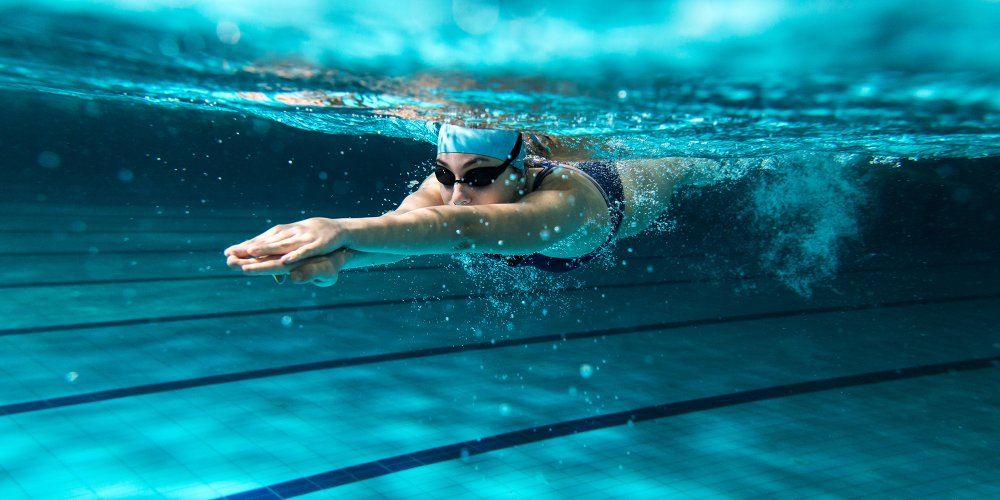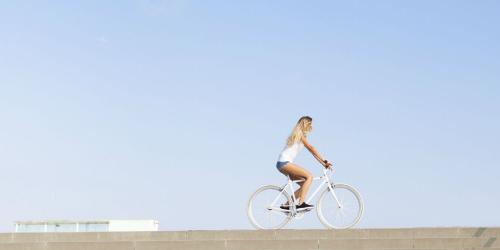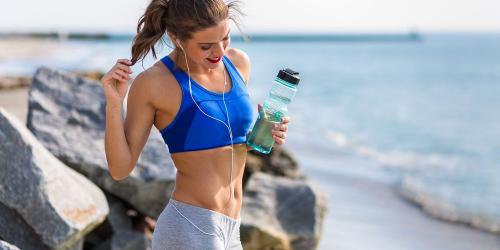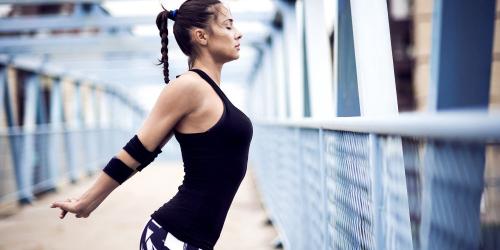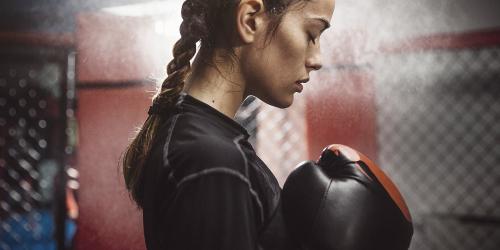It's decided, we make the big dive! Our new playground: the pool. Laura Manaudou left the pools to retire, so why not take over (just that)? Sports activity suitable for all, swimming has many virtues, both for fitness and health, and can even be practiced from the age of 4 months through the courses of "baby swimmers".
Tristan Charles *, sports coach, and Bilel Ayouaz, technical director of the Club ES Vitry Natation, give us the keys to get started.
Which swim for which profile?
There are four types of swimming: breaststroke, crawl, back and butterfly .
"We can not say that each swimming has its own benefits," says Tristan Charles, "but they have differences and specificities in their practice, each of which has specificities that are adaptable to certain issues and will require more or less different muscles. 'ideal being to alternate two types of swimming during his swimming sessions.'
- The breaststroke is considered a relaxing swim, and it is the least intense from a cardio point of view. But it is not simple for all that. "Despite what we can say, the breaststroke is a complex swim," says Bilel Ayouaz. "The synchronization between the movement of the legs and arms is complicated to assimilate, but once mastered, even a very inexperienced swimmer can swim for a fairly long time, and start to build endurance. swimming solicits the upper body (pectoral, trapezius, dorsal ...) but also the legs (quadriceps, ischios, adductors) In contrast, it is to be avoided in case of lower back pain because it induces a binding head movement .
- The crawl is swum on the belly, with reciprocating arms and a kick. "It's a swimming that looks like the back crawl with a difficulty in addition, that of breathing," said Bilel Ayouaz. "Indeed, in this swim the ideal would be to have your head in the water and breathe on the side to facilitate the position of the body in the water.The more you are in a horizontal position, the less there will be resistance to progress. " This type of swimming is more recommended for people with back problems due to breathing on the side. "Nevertheless, continues Tristan Charles, he asks for a certain rhythm and a certain technique before becoming pleasant." This technique is complete since it solicits arms, shoulders, legs, chest and abdominals.
 © FangXiaNuo / iStockphoto.com
© FangXiaNuo / iStockphoto.com
- The swimming on the back (back crawl) consists of an alternating movement of the arms accompanied by a kick of legs. This allows for a novice swimmer to not have the stress of managing his breathing since the mouth and nose are out of the water. "It can pass as the simplest of strokes but the lack of benchmark (the visibility is reduced) can sometimes become complicated ...", explains the coach. From a muscular point of view, as well as from a respiratory point of view, it is pleasant. The position is also more comfortable because it does not involve putting your head under water. Finally, it essentially solicits the muscles of the back and the legs.
- The butterfly, "it is the swimming that requires the most energy.It is not often swum by beginners, but rather by seasoned swimmers", explains Bilel Ayouaz. One swims with a simultaneous passage of the two arms out of the water and ripples (movements similar to the beat of legs but with both legs at the same time). This swim is excellent for toning all abdominals , explains Tristan Charles. The butterfly also solicits the upper body (dorsal, shoulders, trapezius ...) but also the bottom (quadriceps, ischios, calves ...).
If we start, we start with sessions of 20-30 minutes and we extend this time as and when. On average, one hour of swimming (at a moderate pace) can burn up to 600 calories.
How to improve?
"Swimming lessons are for everyone who can not swim from the smallest to the largest," says Bilel Ayouaz. The complexity of learning to swim to an adult often comes from bad habits or apprehension, which is to be perceived, understood and tamed. It may take longer but everyone can learn to swim. And at any age. "
Another option: "advanced swimming" courses for people who already know how to swim, know the basics, and want to improve their technique, to swim faster, longer or with less physical effort ...
There are several courses: in groups, in private lessons, with the municipality or with an association. Budget side, it varies depending on the choice of course (membership year, sports season, quarter or course) and according to the location and equipment of the pool. On average it takes 10 to 15 euros the course but prices can go up to 40 euros per hour for a particular course.
Flippers, floats ... Accessories to make the practice more fun
"The downside of this activity is that it can become redundant ... if you just swim and exercise your movements in a pool of 25 or 50 m", recognizes our coach.
The good trick to make this practice more interesting? Go swimming with others: it makes the sport more attractive and motivating if you have challenges or small challenges. Tristan Charles also advises alternating two swims on the same session, setting time goals on the lengths or working with equipment such as a board and fins to further target the work on the lower body or pull boy for the upper limbs.
For Bilel Ayouaz, the accessories can increase the difficulty of the practice, and are interesting as soon as one is at ease in the water. "For the fins, it is better to opt for short fins, to be able to make fast movements. The board is obviously a very important element that helps to work the legs, and maintain the general position of the body.
And to continue: "As for the pullboy (small float to wedge between the thighs), its use is also interesting to work on the upper body and allow the legs to float to the surface. beat to balance, it will also make a greater effort on the body sheath in the water. "
Finally, Bilel Ayouaz recommends platelets or fingers (finger pads) only experienced swimmers with advanced technique, to avoid the risk of shoulder injuries.
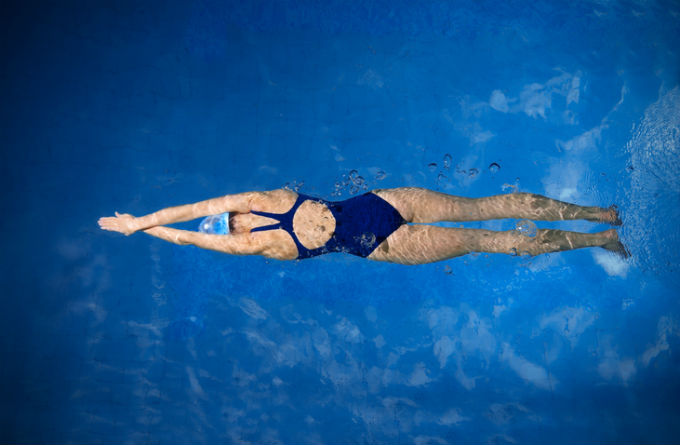 © rbv / iStockphoto.com
© rbv / iStockphoto.com
Swimming, proven health benefits
Swimming is often praised for its relaxing, relaxing and recuperative virtues: "It is recommended for rehabilitation, whether for sedentary or high-level athletes (there are even courses in the aquatic environment to overcome his phobias)." And to add: "Like all other well-supervised physical activities, swimming essentially helps improve back and joint problems."
Thanks to the phenomenon of weightlessness, swimming does not involve the constraints or over-solicitations that can be found in running or crossfit for example. It is therefore perfect for soothing the pain associated with arthritis and osteoarthritis .
Swimming also increases one's physical capacities: cardio reinforcement, strength, sheathing , motor skills, coordination. In addition, water resistance provides gentle muscle work throughout the body and improves venous return, ideal for relieving heavy legs . "It can be practiced as a main activity, complementary or recovery.In the short and long term, it causes less fatigue in everyday life, more energy, more strength ..." says Tristan Charles.
What contraindications?
As with any sport, there are contraindications. Swimming is therefore not recommended for people with ENT, skin problems or certain heart diseases. Medical advice is recommended in all cases. And while swimming is often part of a re-education process, there are still steps to be taken: "Do not swim directly after tendinitis because resistance is too much," says Tristan Charles. In all cases, consult your doctor or a sports doctor before starting a new sport activity.
The right equipment to go swimming
Of course, there are essentials: the swimsuit , a towel or a bathrobe for the more cautious, glasses to protect his eyes from chlorine, and clappers (or flip-flops) to protect his feet from possible plantar warts or mycoses.
Another essential: the bathing cap. To choose it, Bilel Ayouaz advises to listen: "There are several types of bathing caps, fabric, silicone ... The essential thing is to know what you can support, and to identify the advantages and disadvantages Silicone bonnet allows a good hold of the hair without too much risk of losing it, but its 'too tight' side can embarrass more than one for example. "
Ready to take the plunge?
* Instagram: @ tristancharles.coachsportif
